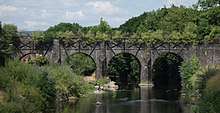Rumney Railway
Rumney Railway | ||||||||||||||||||||||||||||||||||||||||||||||||||||||||||||||||||||||||||||||||||||||||||||||||||||||||||||||||||||||||||||||||||||||||||||||||||||||||||||||||||||||||||||||||||||||||||||||||||||||||||||||||||||||||||||||||||||||||||||||||||||||||||||||||||||||||||||||||
|---|---|---|---|---|---|---|---|---|---|---|---|---|---|---|---|---|---|---|---|---|---|---|---|---|---|---|---|---|---|---|---|---|---|---|---|---|---|---|---|---|---|---|---|---|---|---|---|---|---|---|---|---|---|---|---|---|---|---|---|---|---|---|---|---|---|---|---|---|---|---|---|---|---|---|---|---|---|---|---|---|---|---|---|---|---|---|---|---|---|---|---|---|---|---|---|---|---|---|---|---|---|---|---|---|---|---|---|---|---|---|---|---|---|---|---|---|---|---|---|---|---|---|---|---|---|---|---|---|---|---|---|---|---|---|---|---|---|---|---|---|---|---|---|---|---|---|---|---|---|---|---|---|---|---|---|---|---|---|---|---|---|---|---|---|---|---|---|---|---|---|---|---|---|---|---|---|---|---|---|---|---|---|---|---|---|---|---|---|---|---|---|---|---|---|---|---|---|---|---|---|---|---|---|---|---|---|---|---|---|---|---|---|---|---|---|---|---|---|---|---|---|---|---|---|---|---|---|---|---|---|---|---|---|---|---|---|---|---|---|---|---|---|---|---|---|---|---|---|---|---|---|---|---|---|---|---|---|---|---|---|---|---|---|---|---|---|---|---|---|---|---|---|
| ||||||||||||||||||||||||||||||||||||||||||||||||||||||||||||||||||||||||||||||||||||||||||||||||||||||||||||||||||||||||||||||||||||||||||||||||||||||||||||||||||||||||||||||||||||||||||||||||||||||||||||||||||||||||||||||||||||||||||||||||||||||||||||||||||||||||||||||||
The Rumney Railway in Wales was a 4 ft 2 in (1,270 mm) plateway built to connect the ironworks at Rhymney to the Monmouthshire Canal Company's tramroad near Newport, Wales providing a connection the wharves at the Newport Docks. The line was opened in 1826. It was later converted to a standard gauge railway,[1]
History

The company was incorporated in 1825 and the line, engineered by George Overton, opened the following year worked by horses. The line ran down the east side of the River Rhymney to Machen where the route left the river to head east towards Newport making a junction with the Monmouthshire line at the top end the part of that company's route known as the Park Mile which was built and maintained by Sir Charles Morgan where it ran through his park of his Tredegar House on its way to the shipping places on the River Usk at Newport.[2]
The line operated in a similar way to a toll road and traders introduced steam locomotives in the 1840s.[3] In 1856 Crawshay Bailey purchased a plateway locomotive from the Monmouthshire company for the Rumney Railway implying that the company was operating the line with its own locomotives.[4]
The Monmouthshire company converted its lines in the Western Valleys to standard gauge railways in the 1850s and in 1861 Lord Tredegar (Chairman) and Crawshay Bailey (Director) obtained an Act of Parliament to reincorporate the Rumney Railway as a railway company, with powers to reconstruct the line as a standard gauge railway. Also obtained were powers to make a branch to join the Rhymney Railway at Caerphilly and to sell or lease the undertaking to either the Monmouthshire Railway or the West Midland Railway.
However little was done to improve the line which remained a plateway until it was acquired by the Brecon and Merthyr Railway by its Act of 28 July 1863. The reconstructed line was finally passed as safe for passengers by the Board of Trade Inspector on his third visit and opened to passenger traffic through to the Monmouthshire Railway's Newport (Dock Street) station on 14 June 1865.
References
- "Brecon and Merthyr Railway - Bassaleg to Bargoed". Barry J. Retrieved 16 March 2009.
- Barrie, Derek Stiven (1980). A Regional History of the Railways of Great Britain, Volume 12, South Wales. Newton Abbot: David and Charles. pp. 87–88. ISBN 0-7153-7970-4.
- The Locomotives of the Great Western Railway, Part Ten, Absorbed Engines 1922-1947. The Railway Correspondence and Travel Society. 1966. pp. K196.
- The Locomotives of the Great Western Railway, Part Three, Absorbed Engines 1854-1921. The Railway Correspondence and Travel Society. 1956. pp. C53. ISBN 0-901115-33-9.